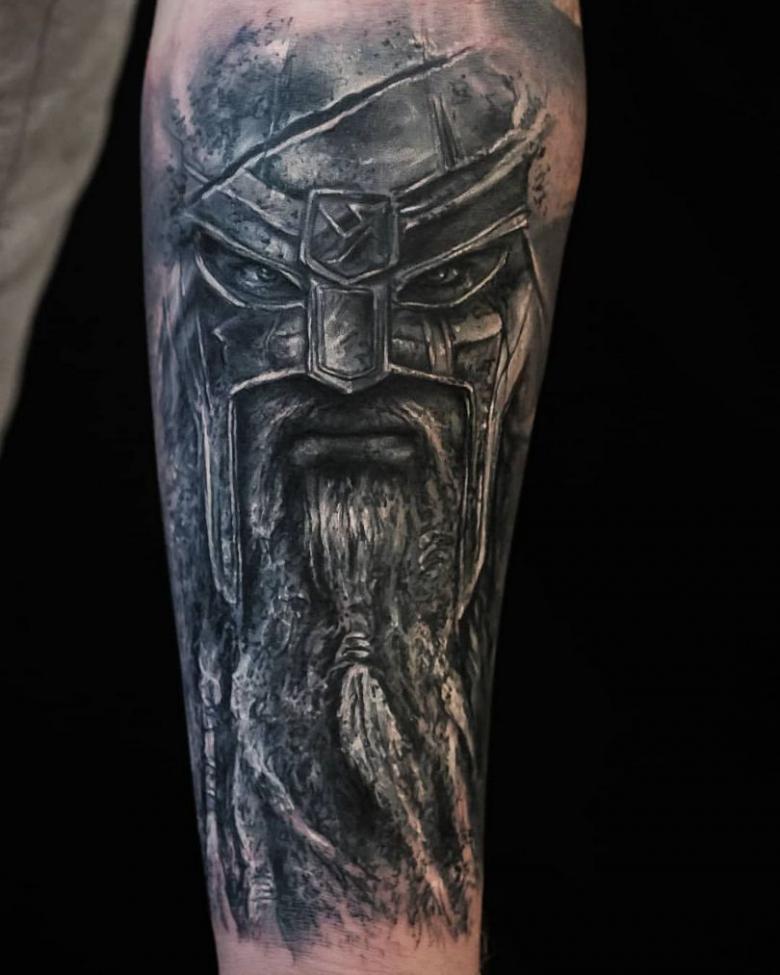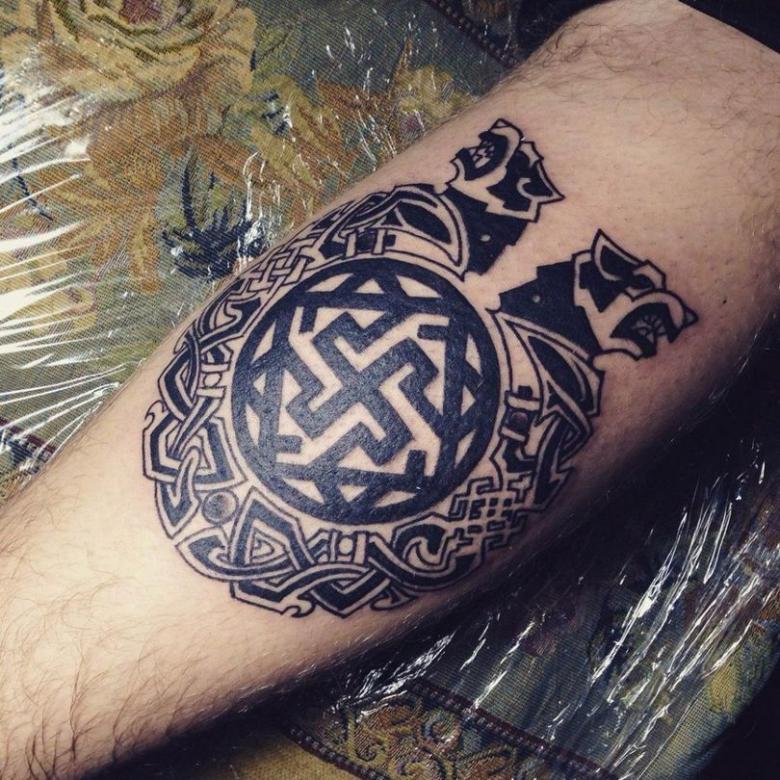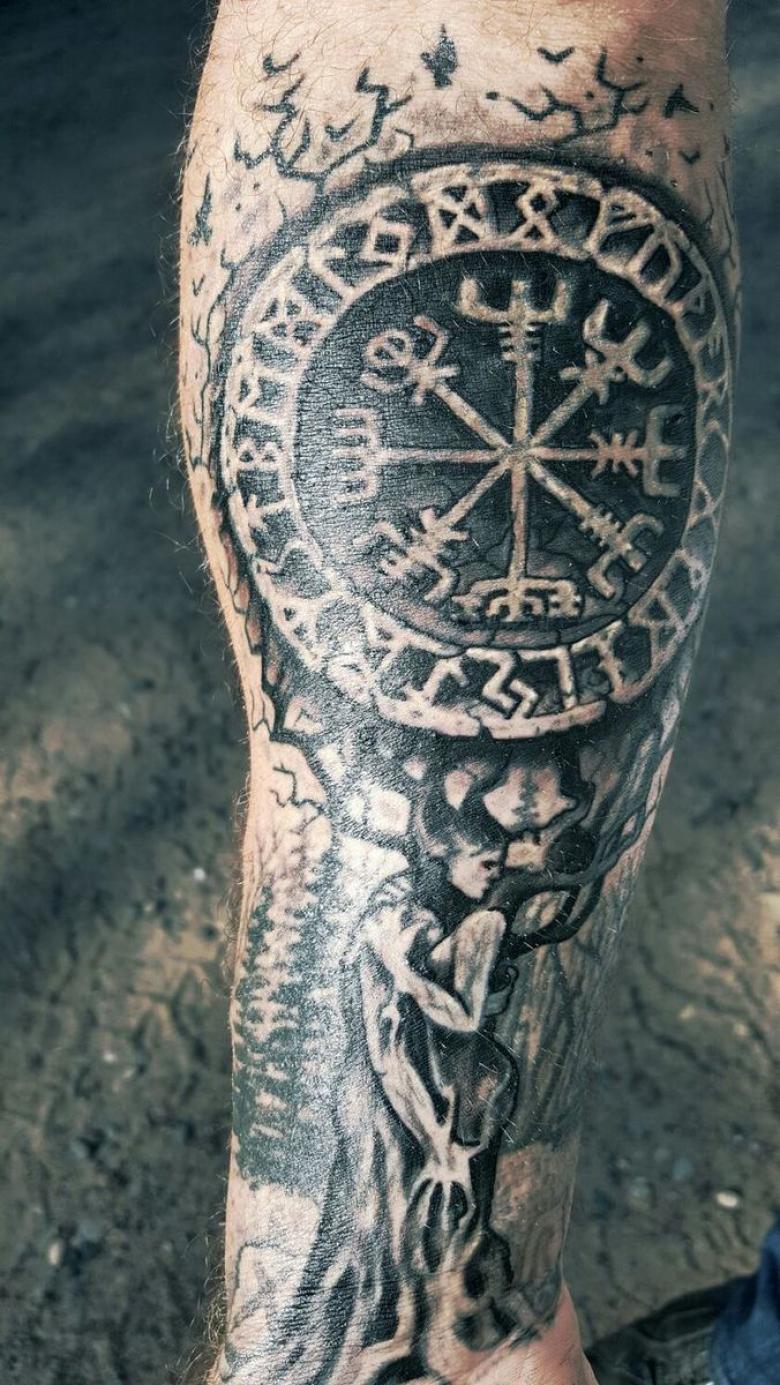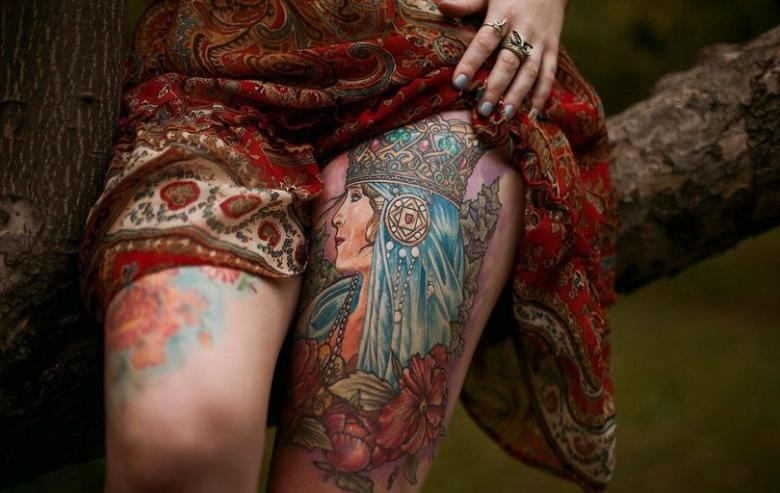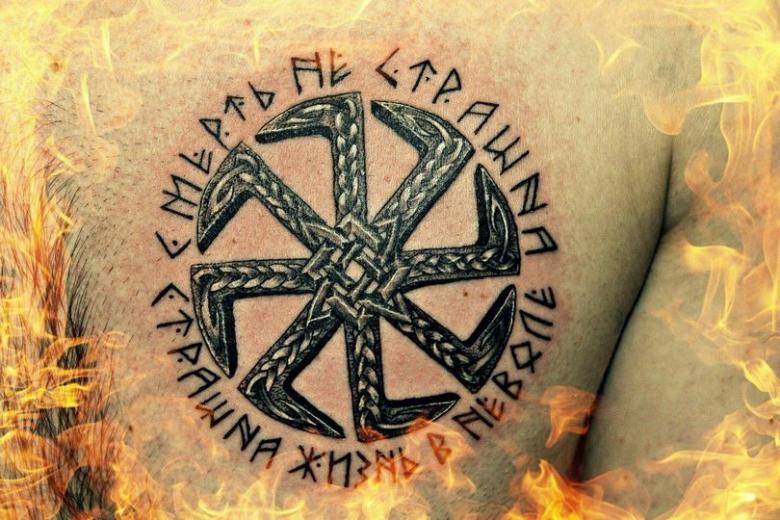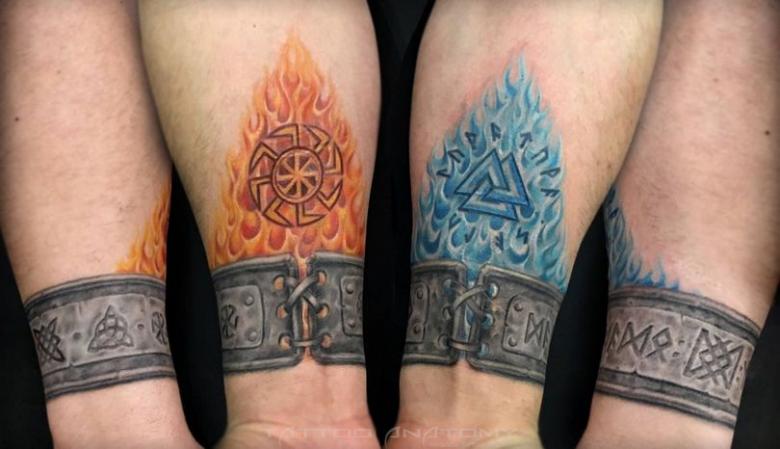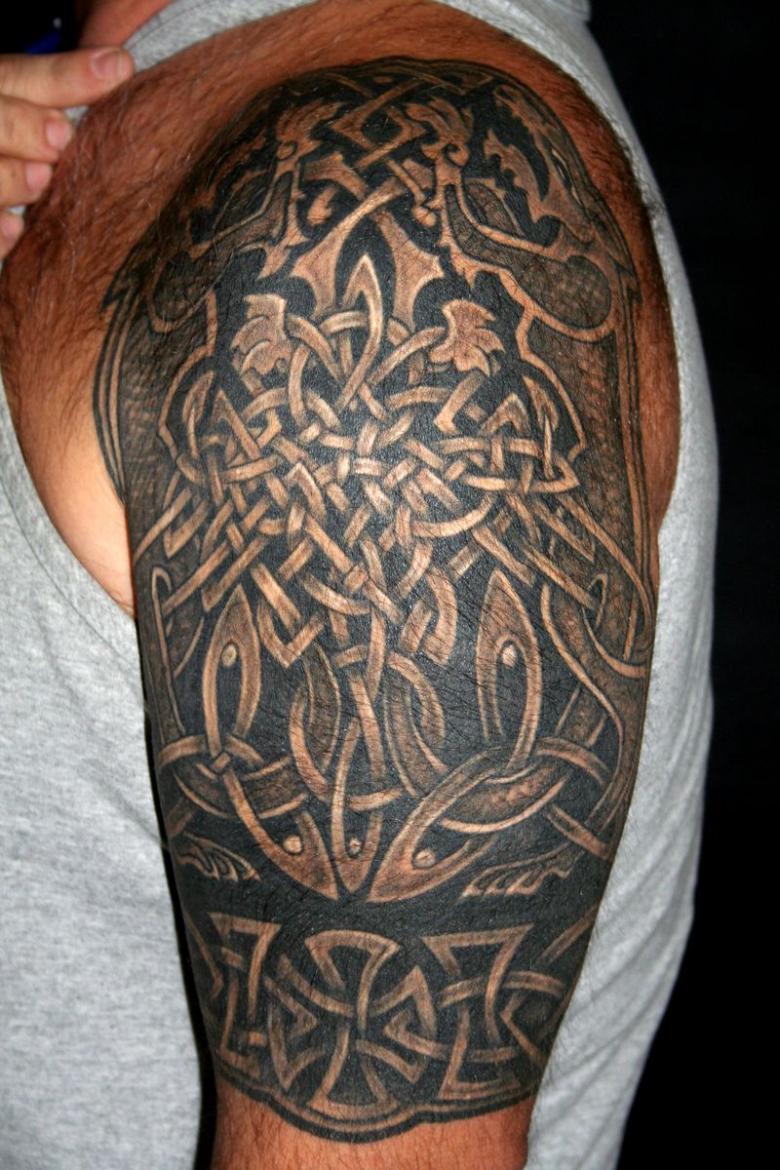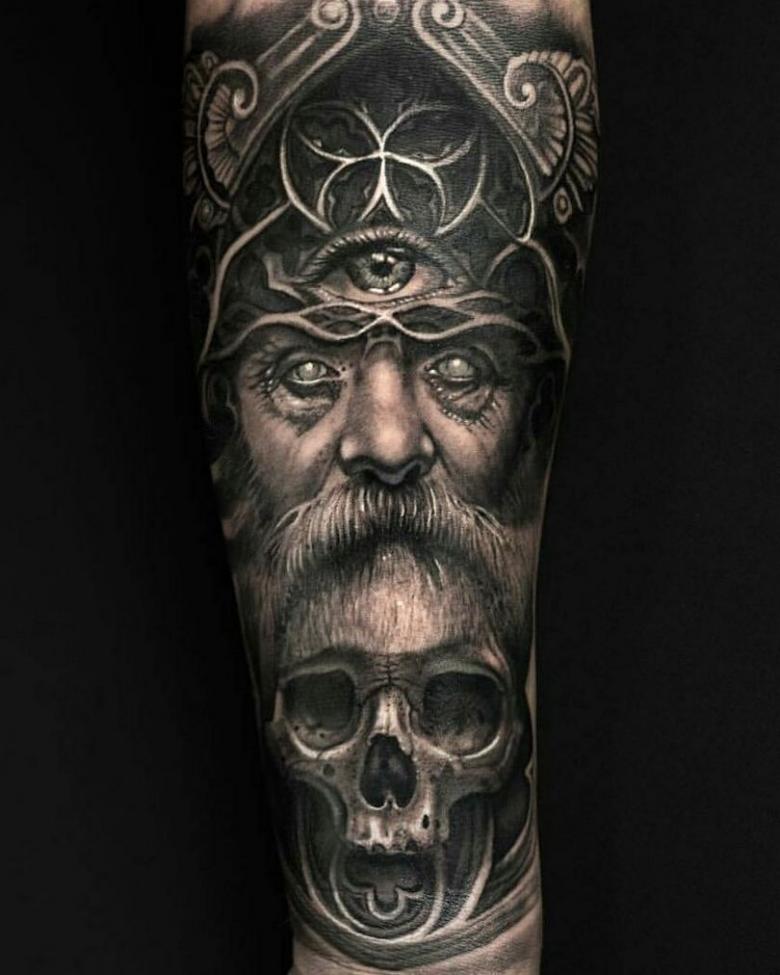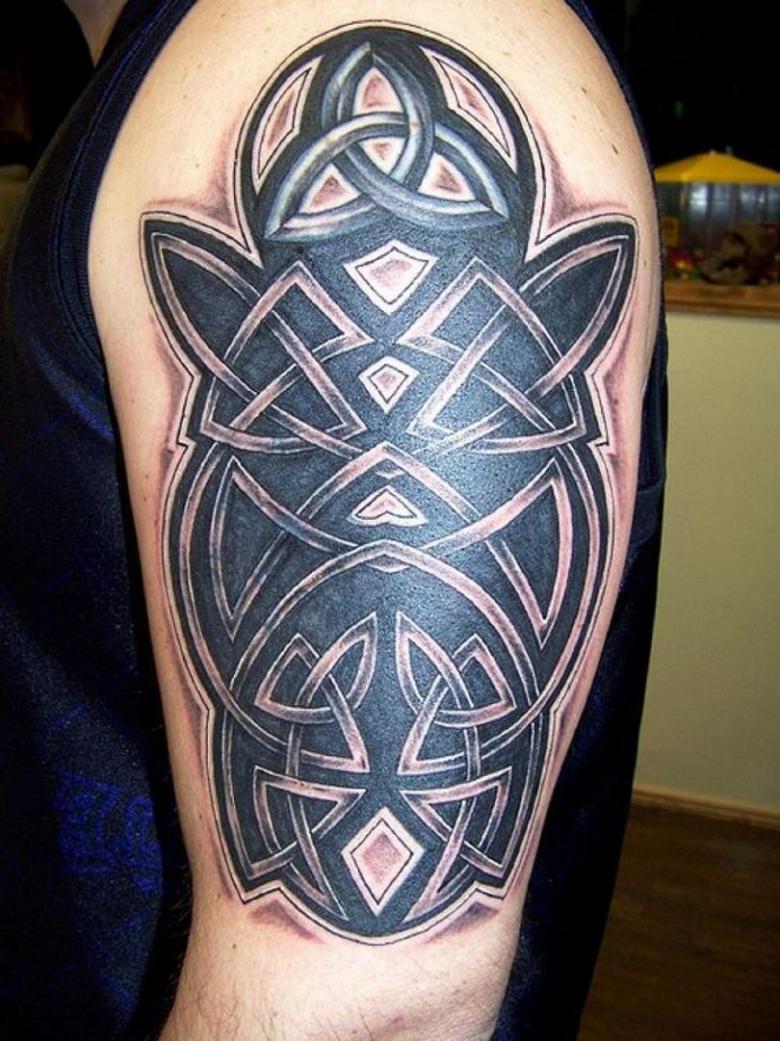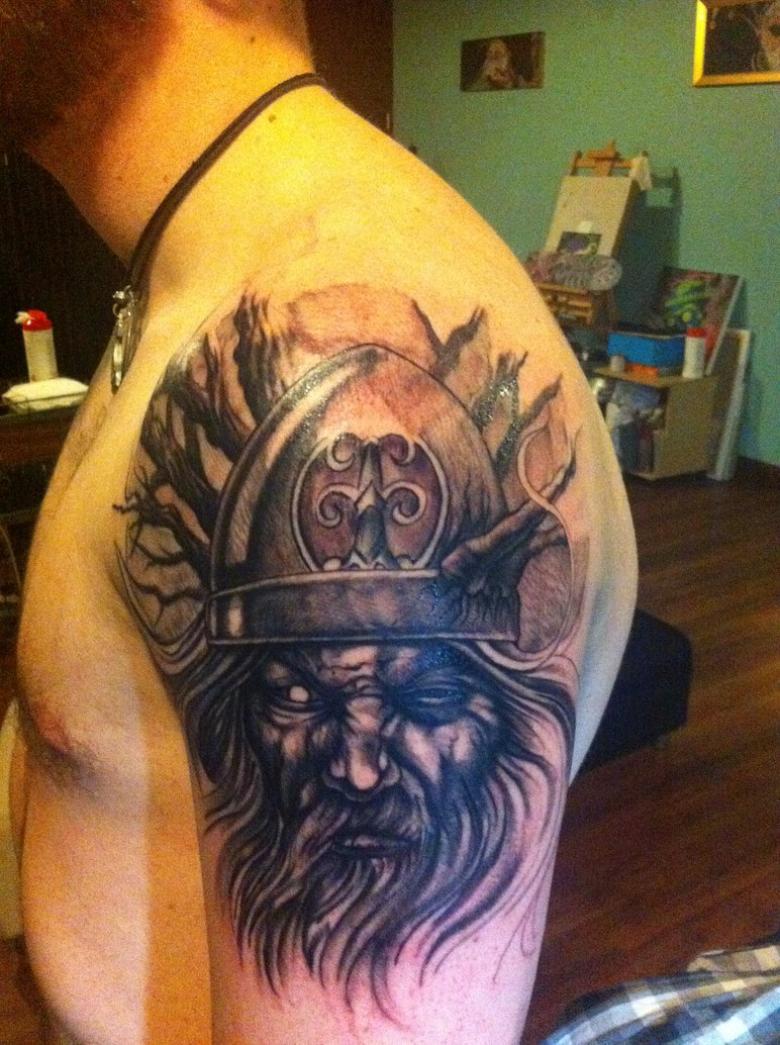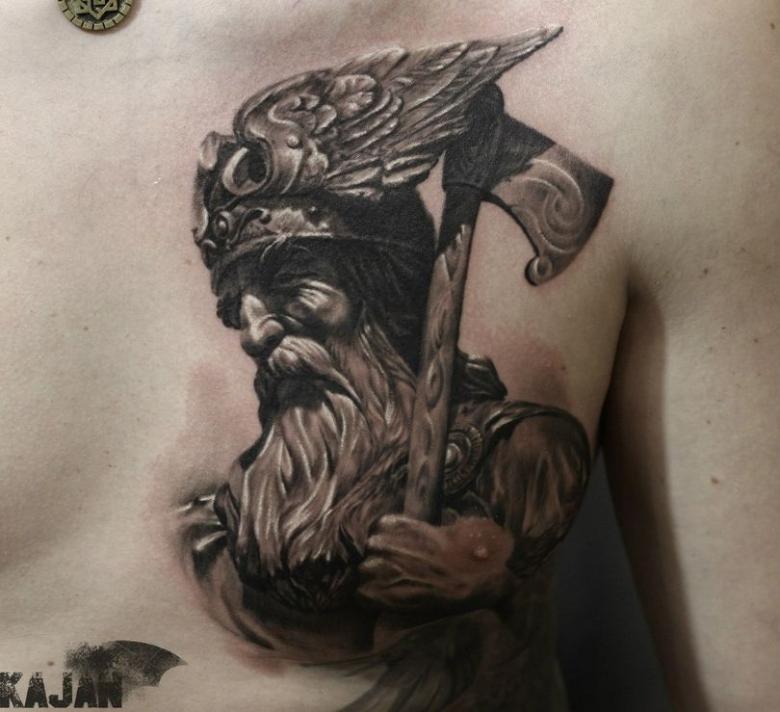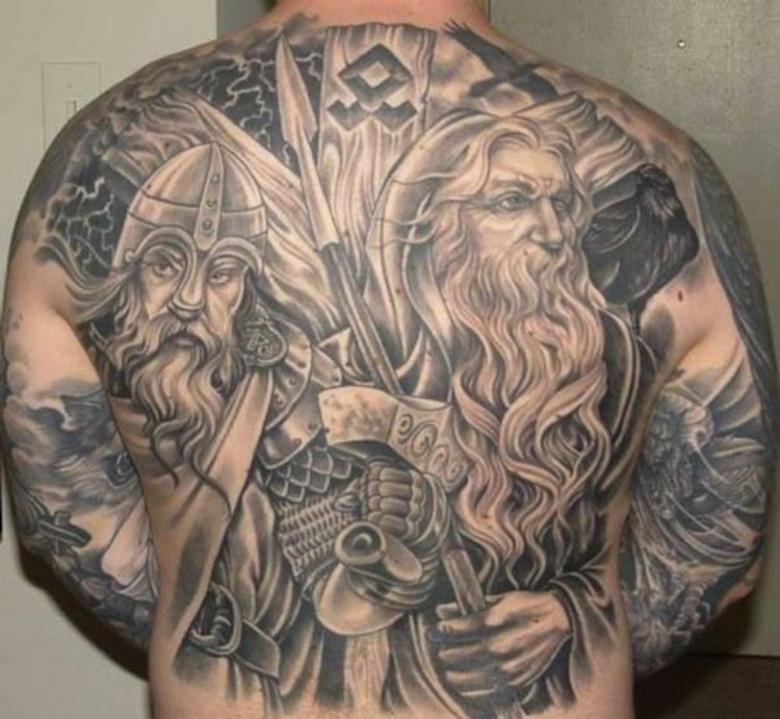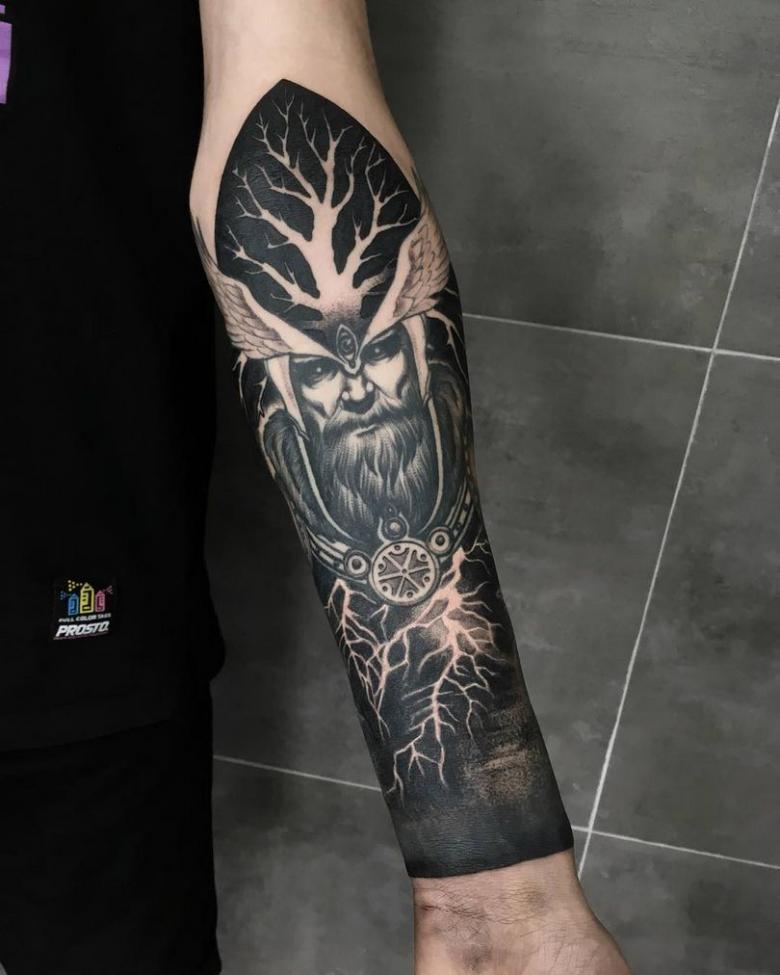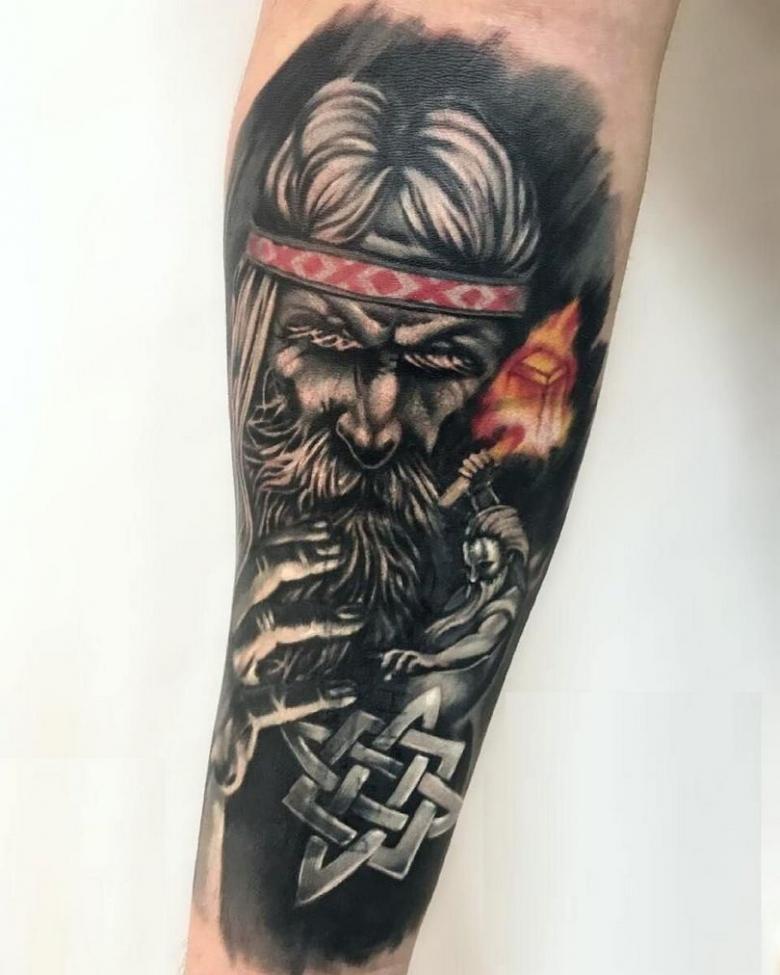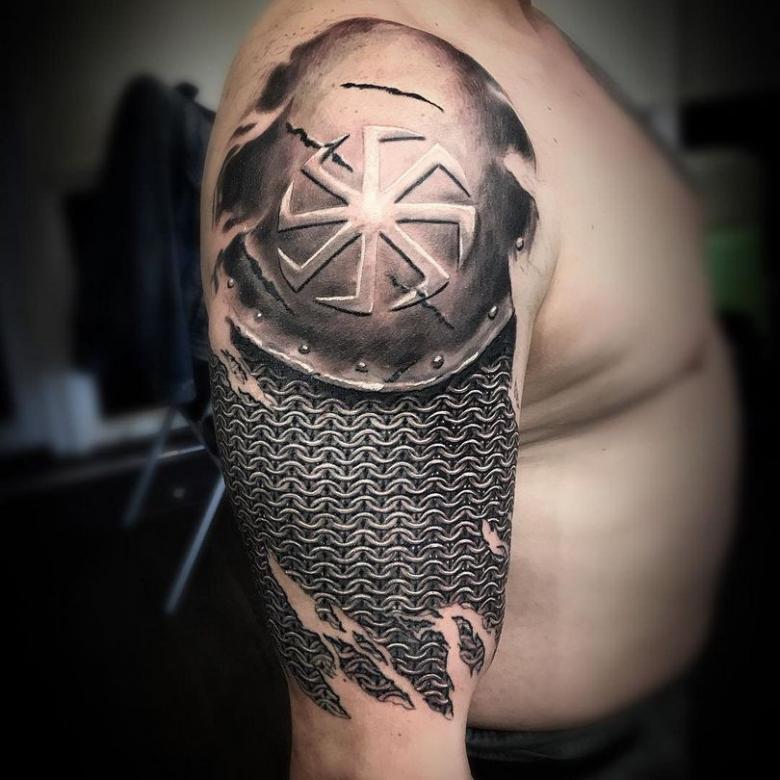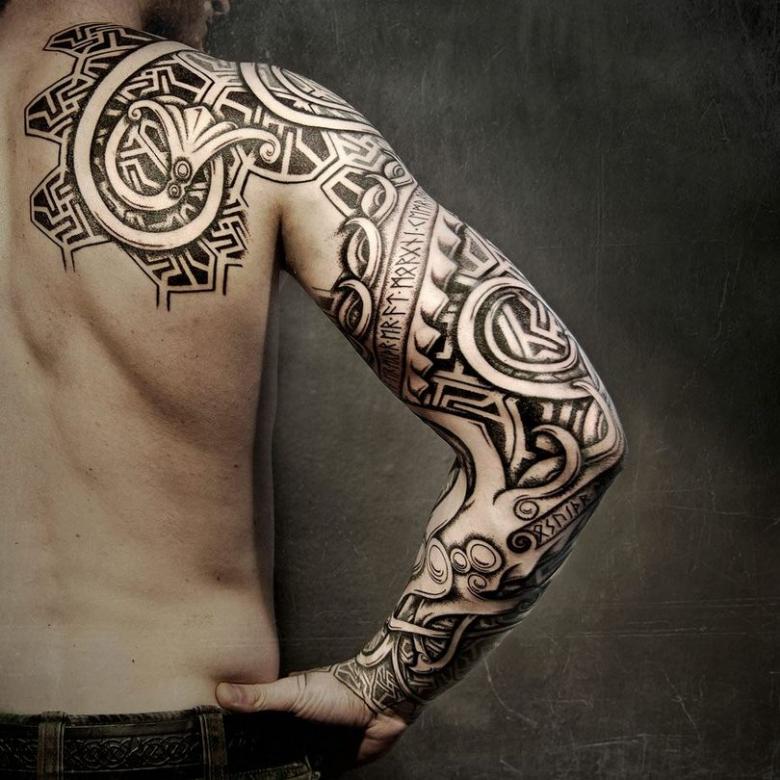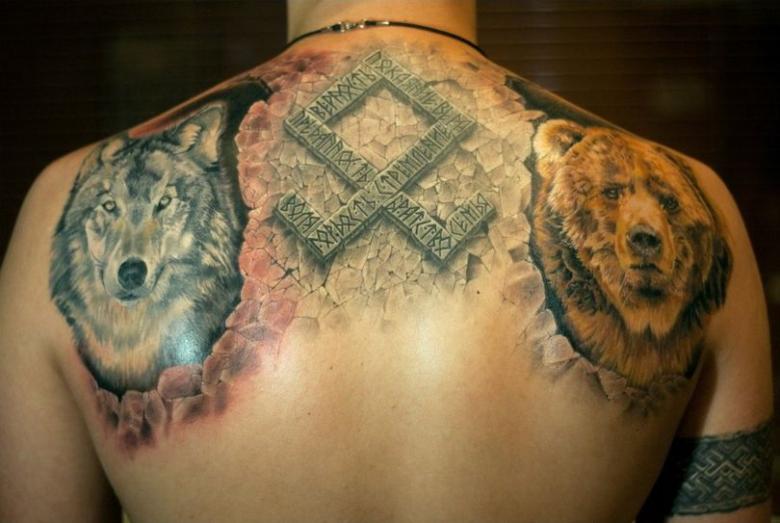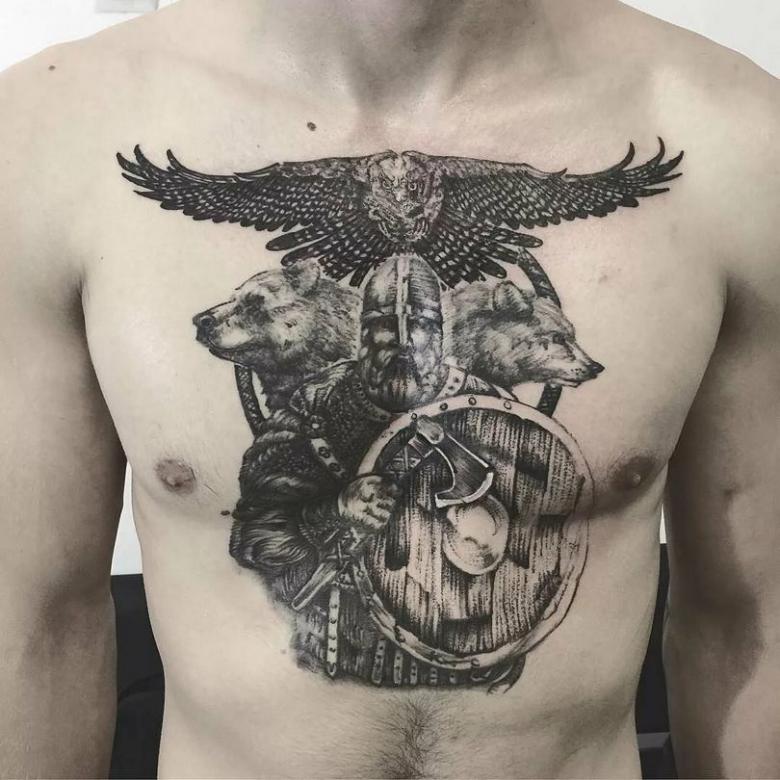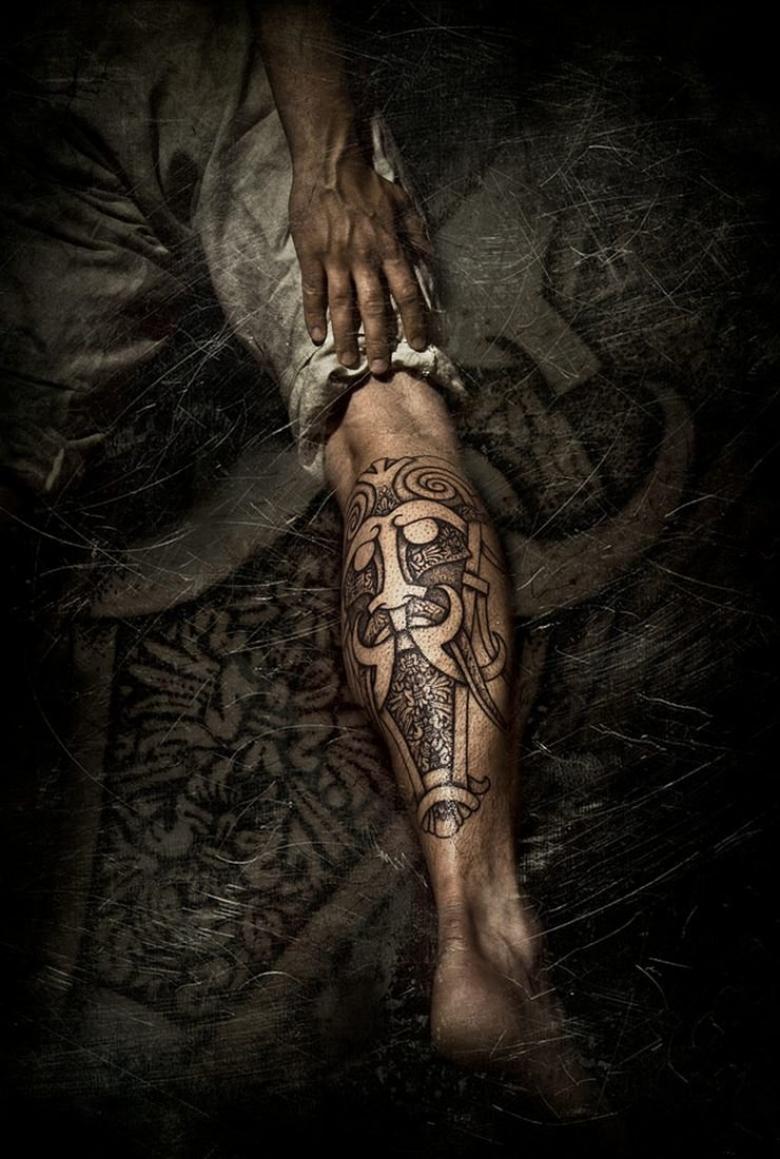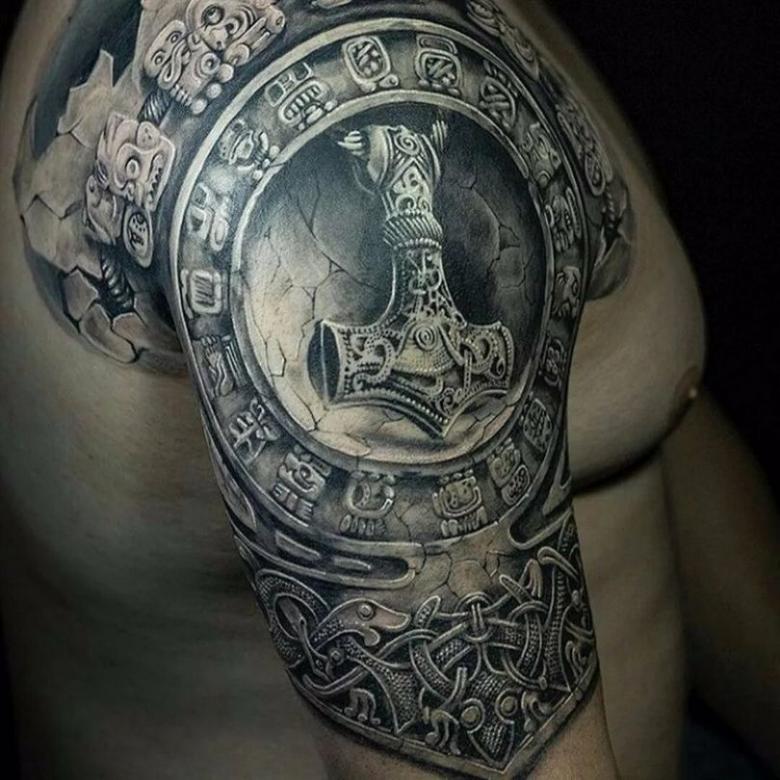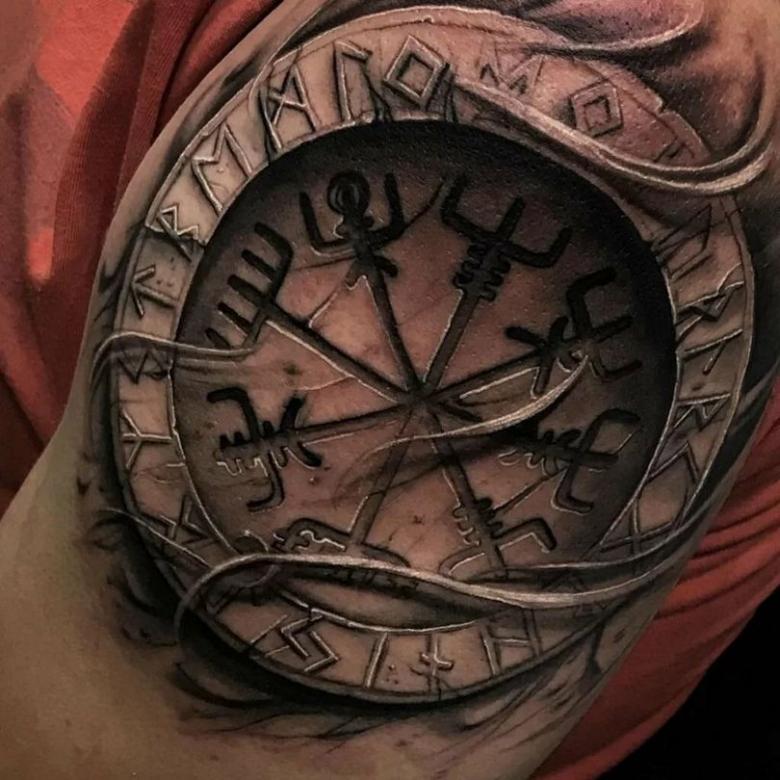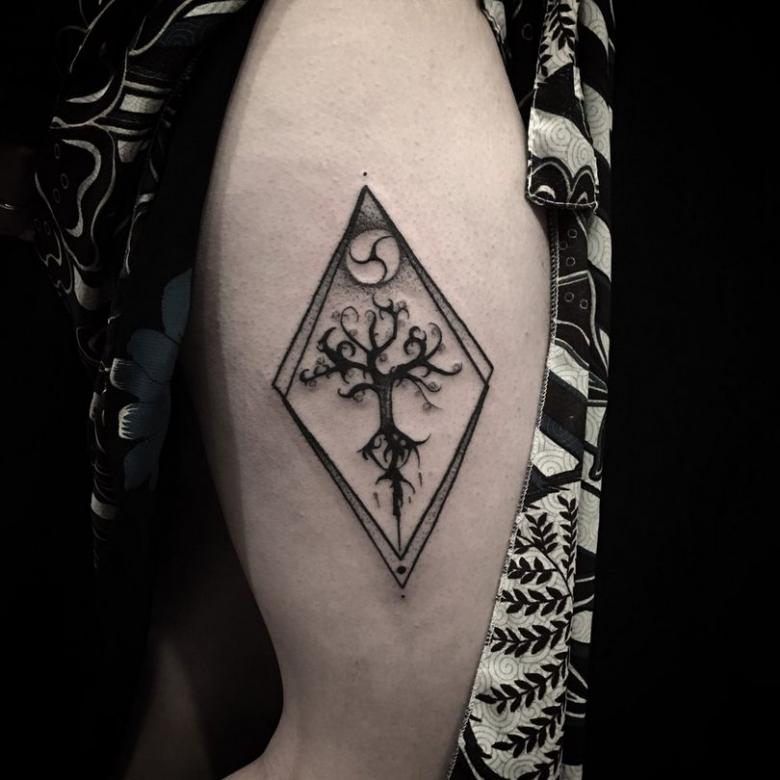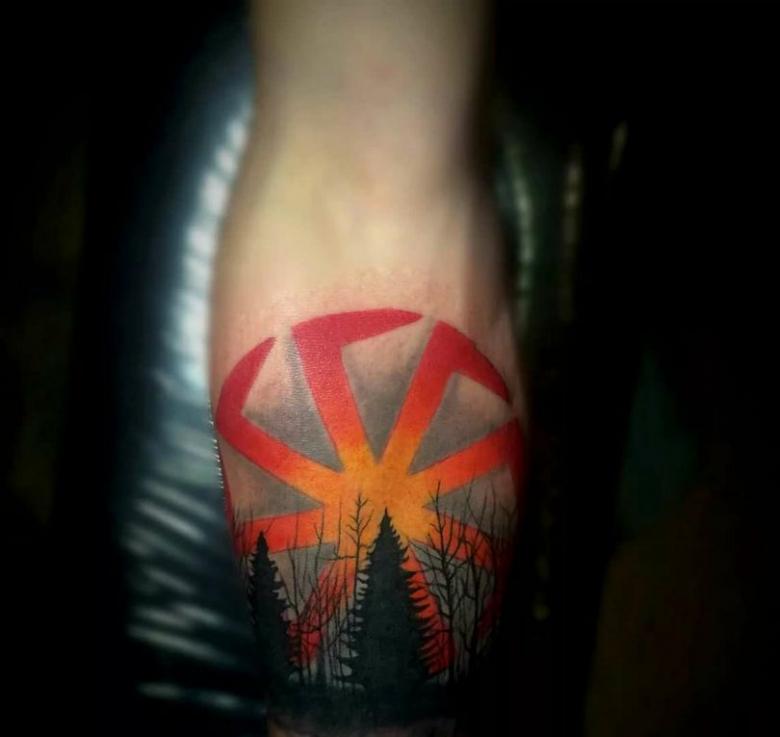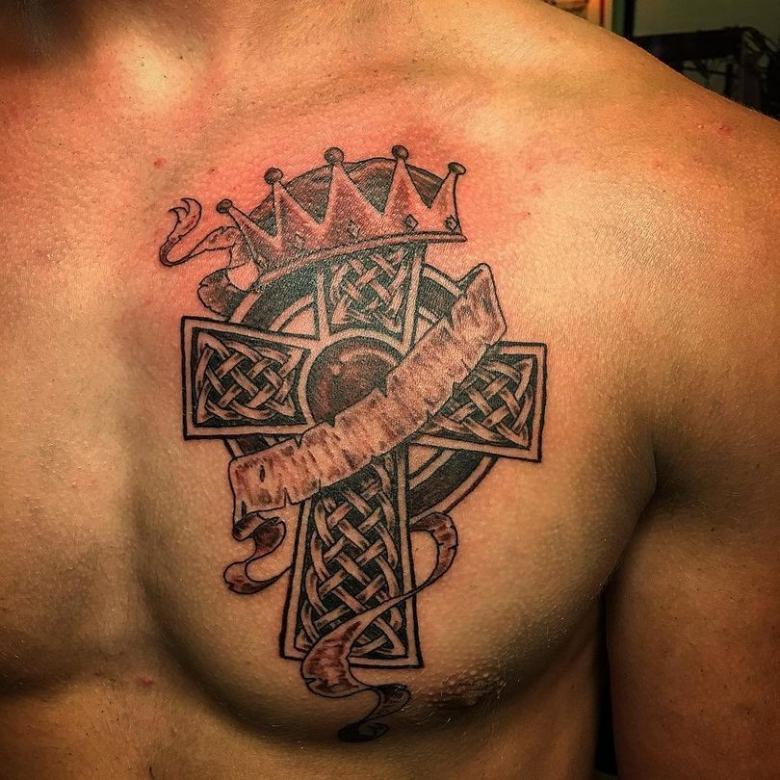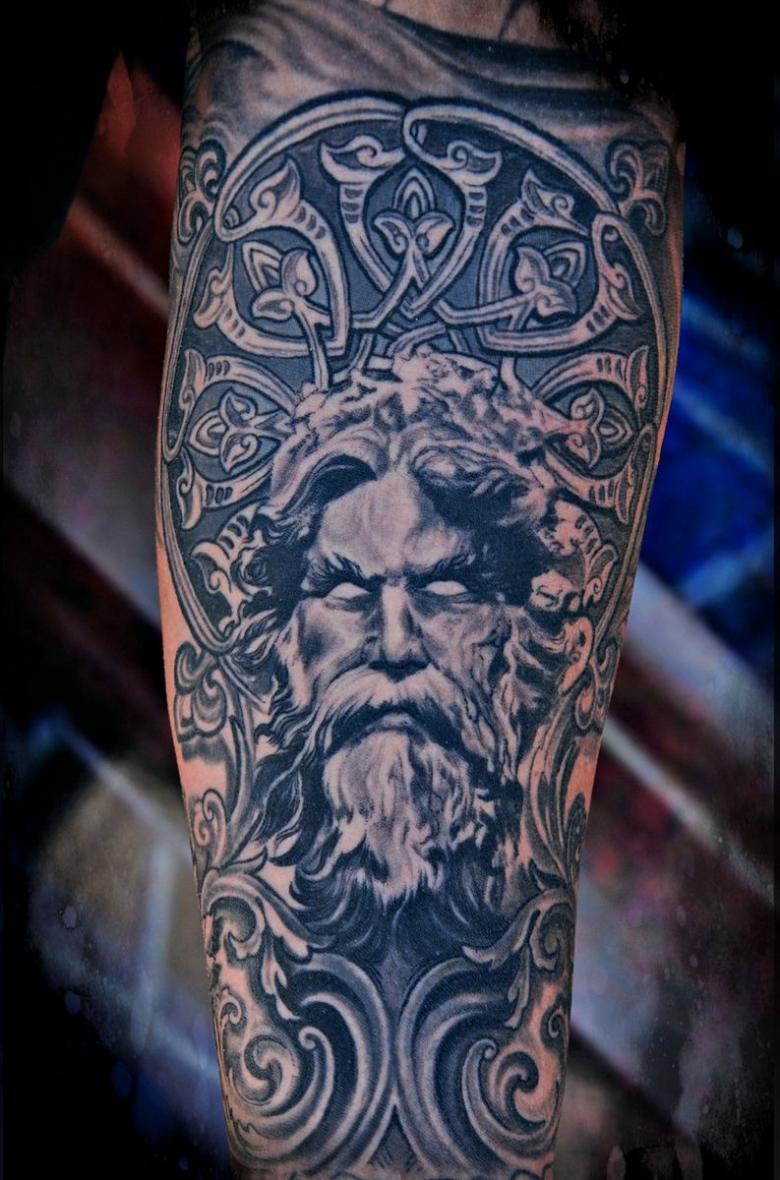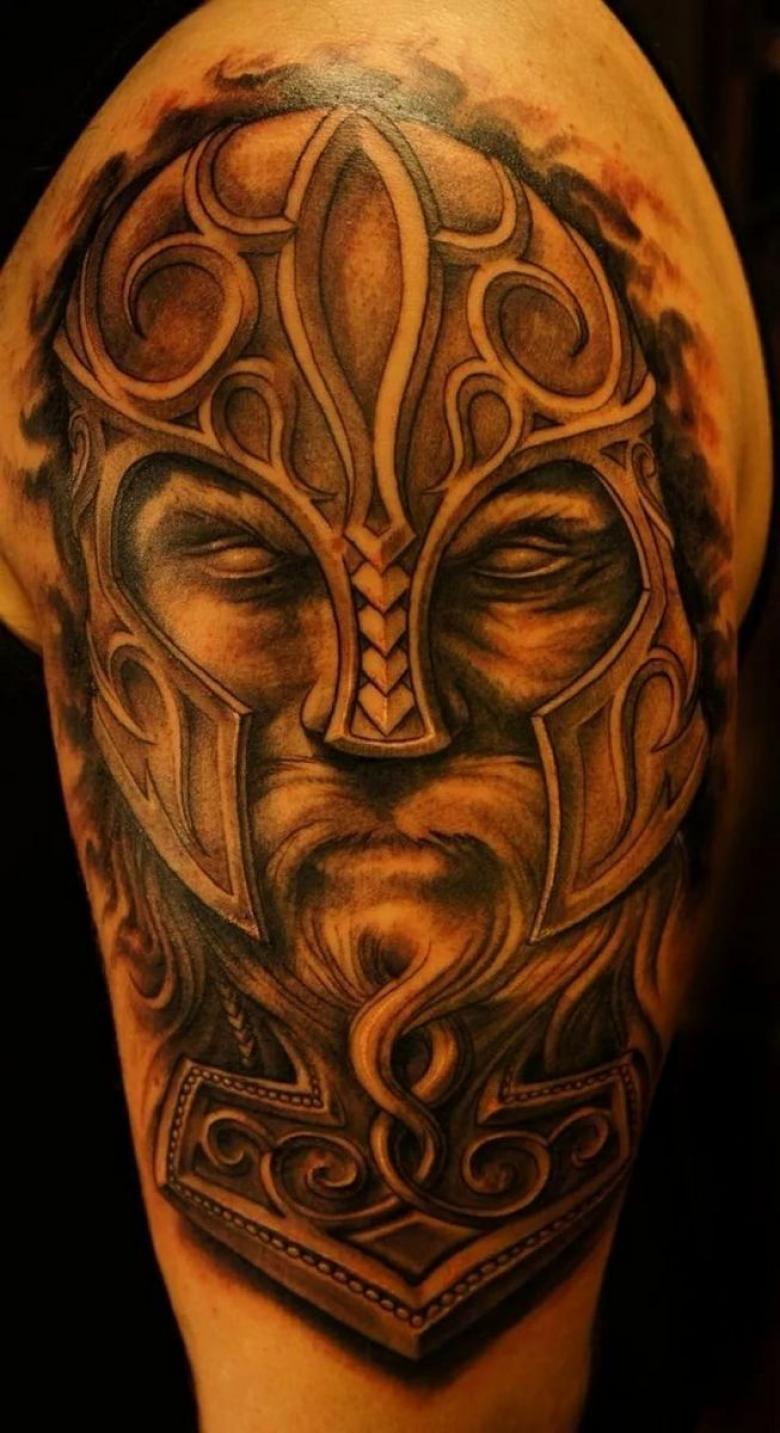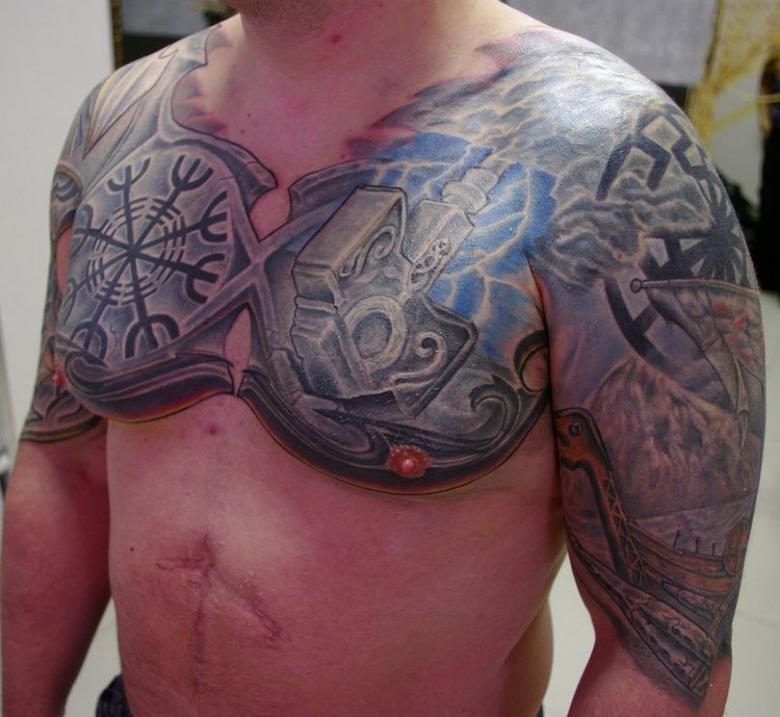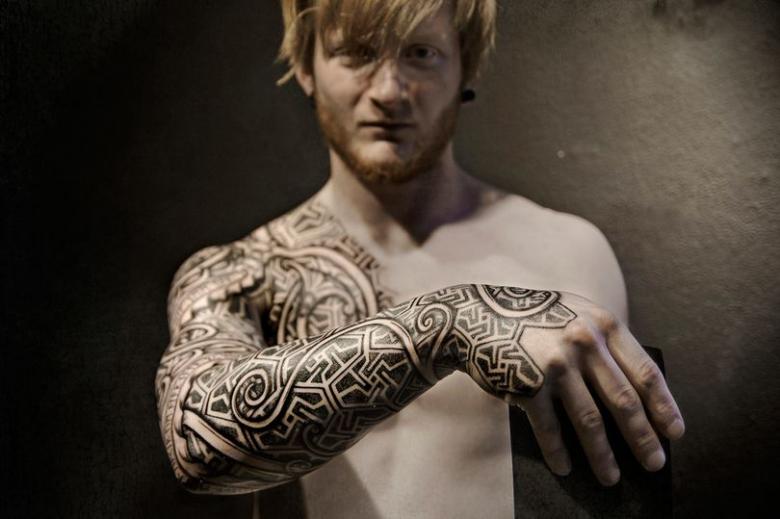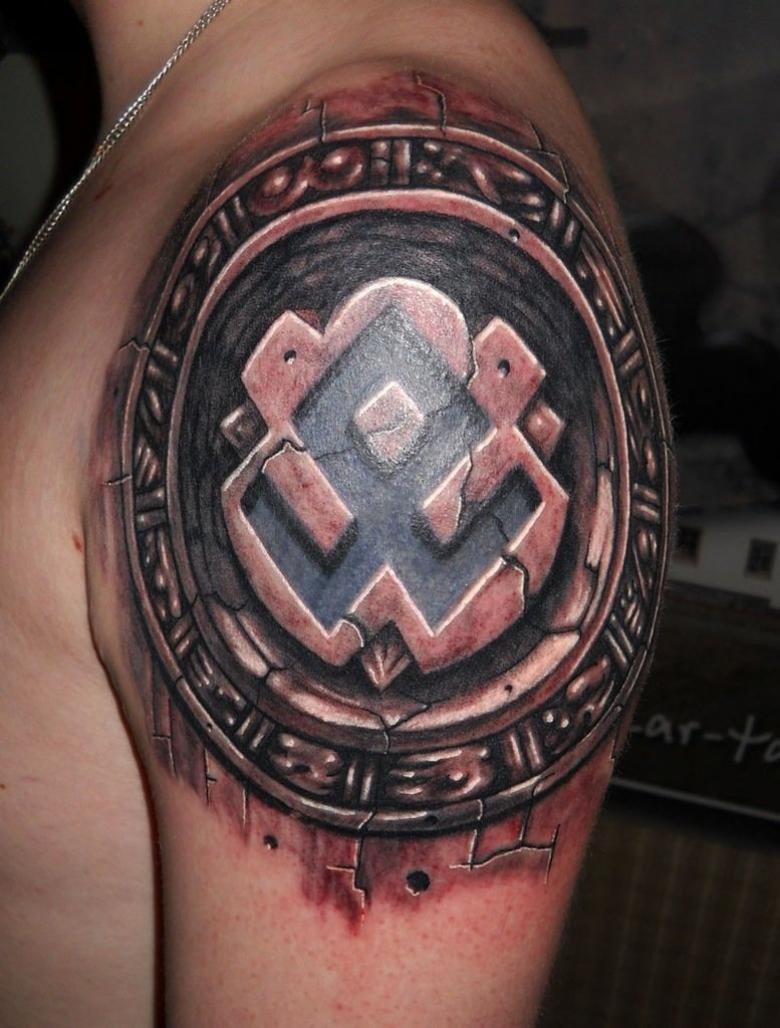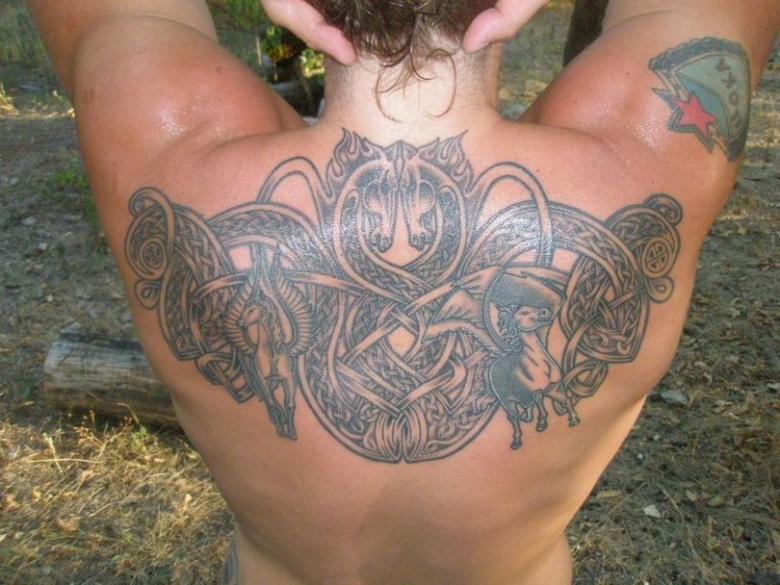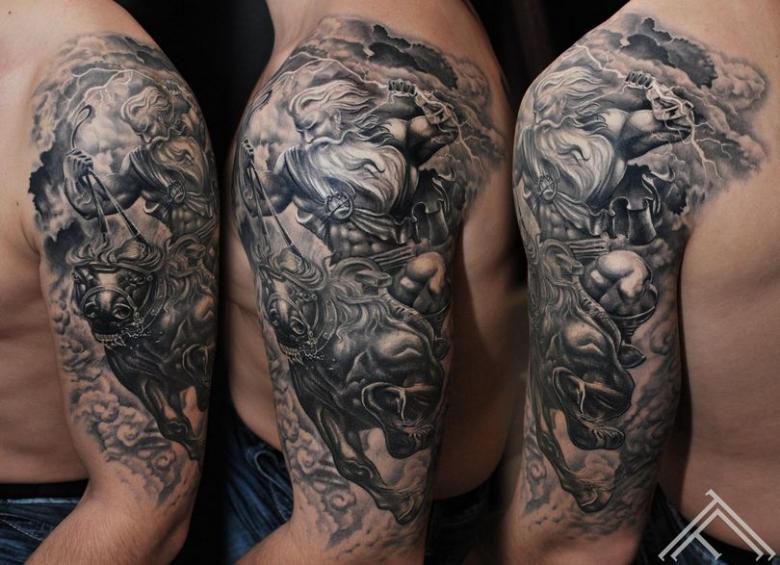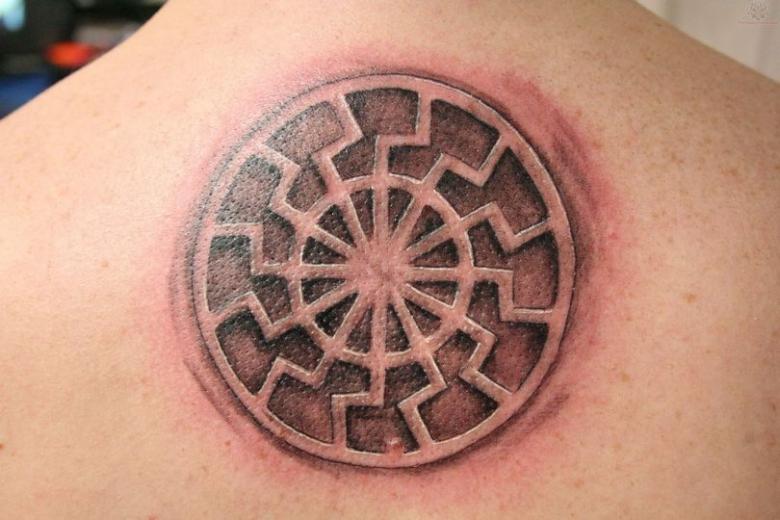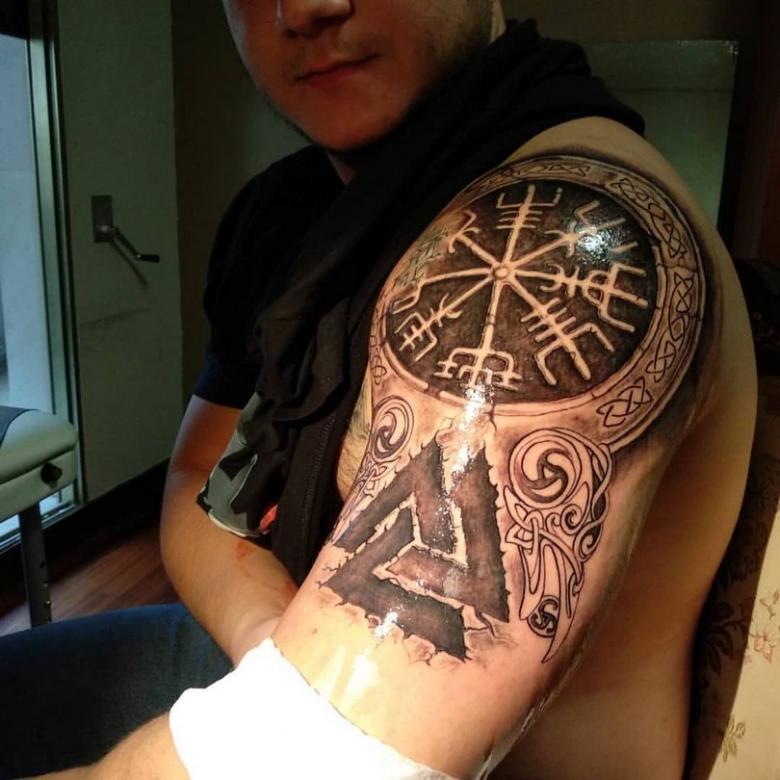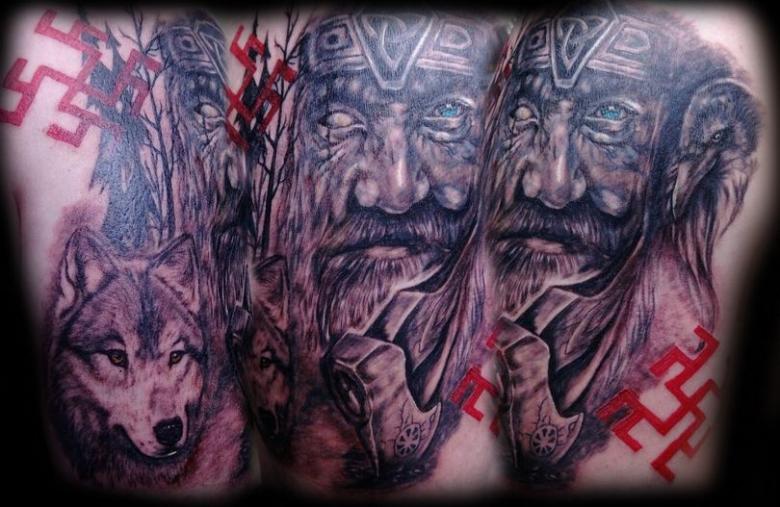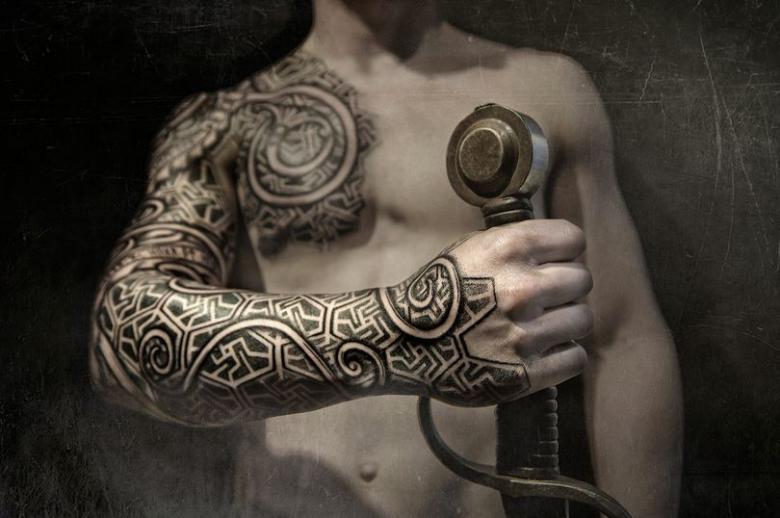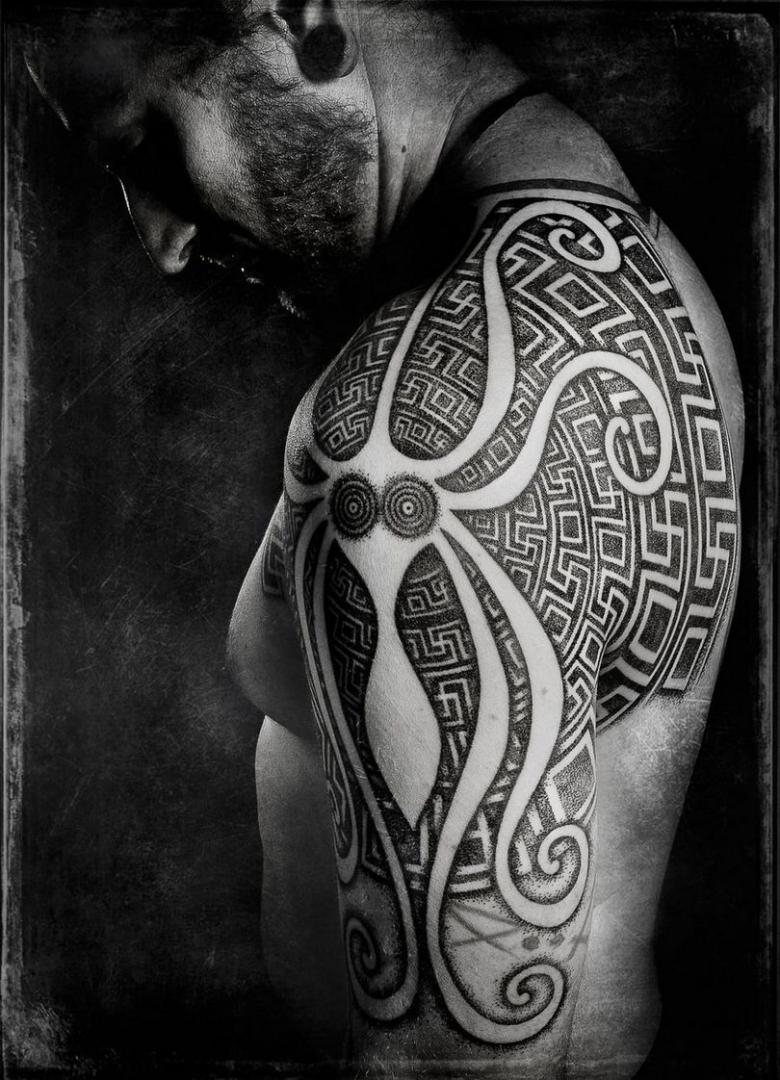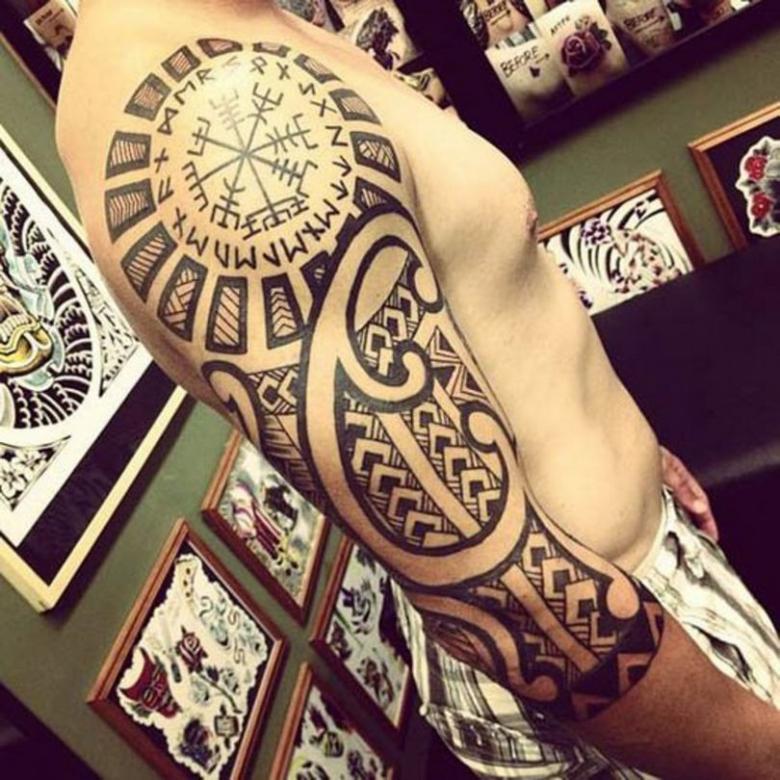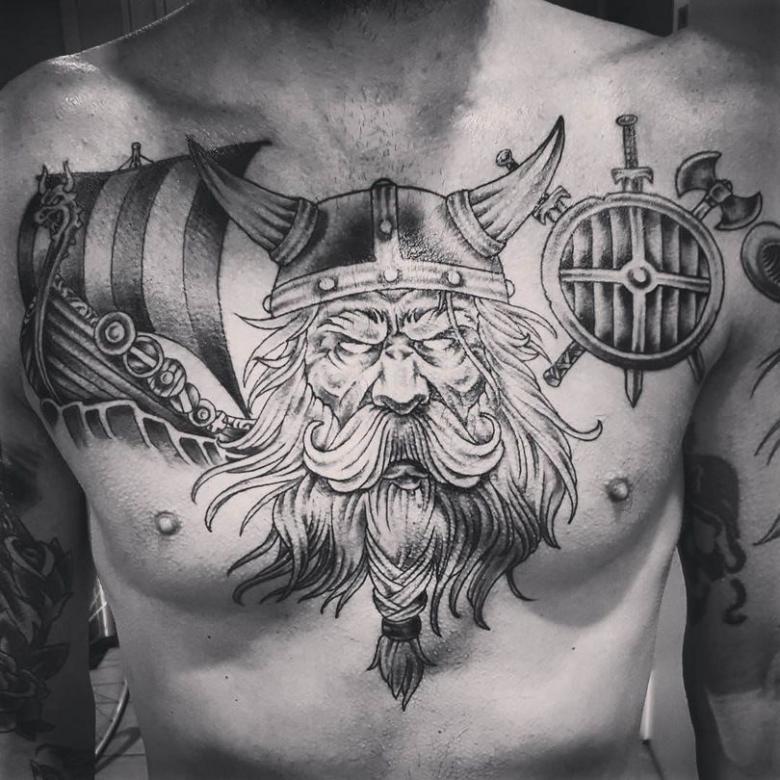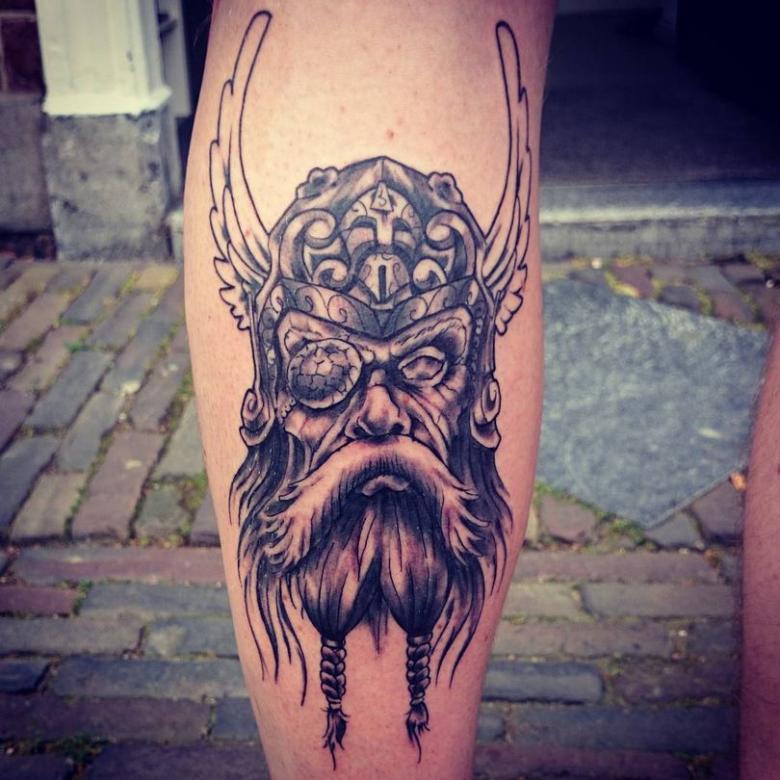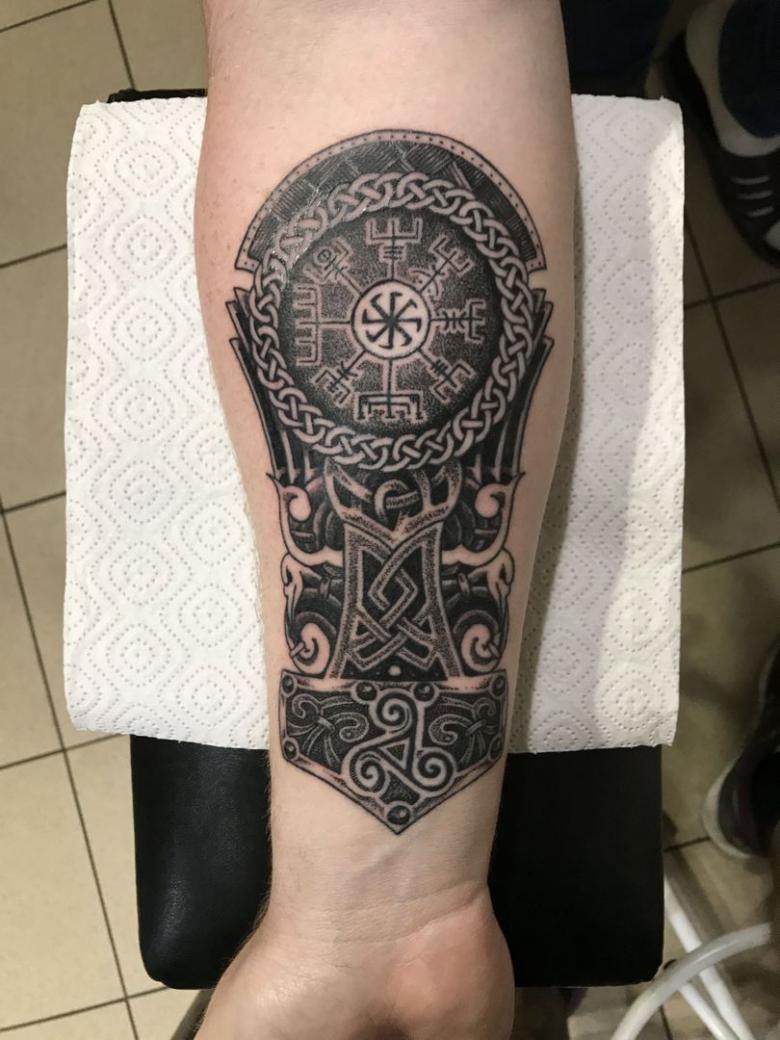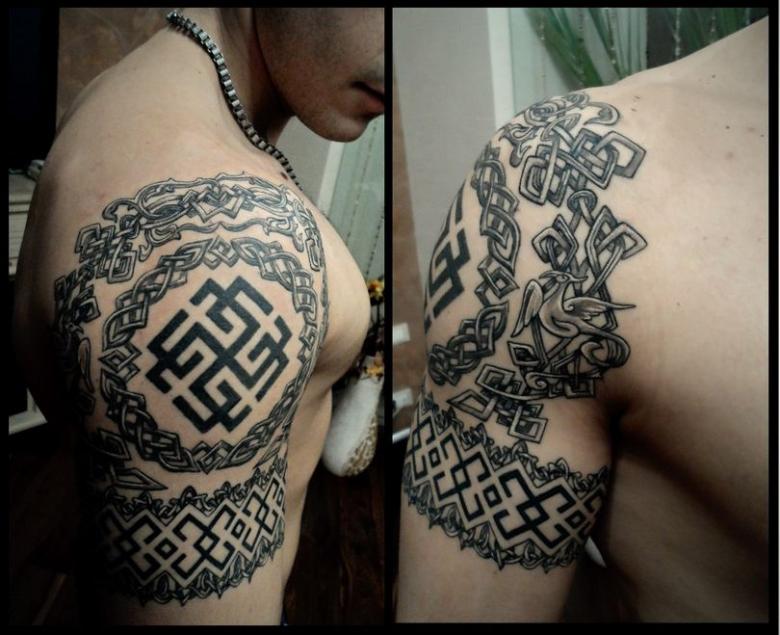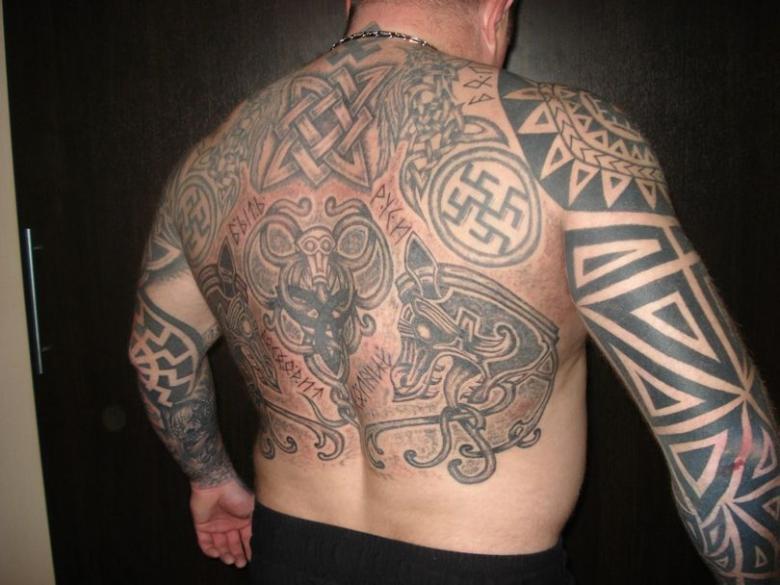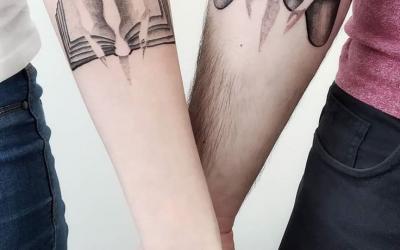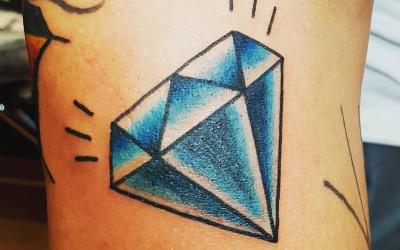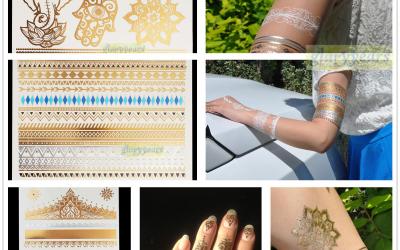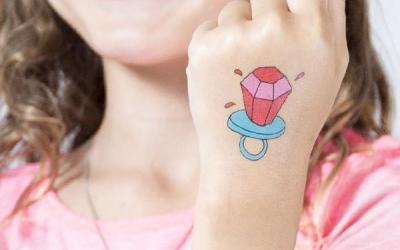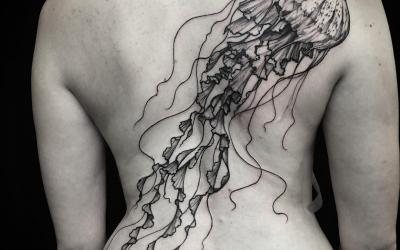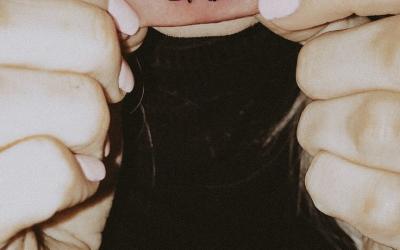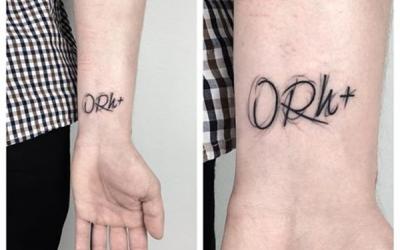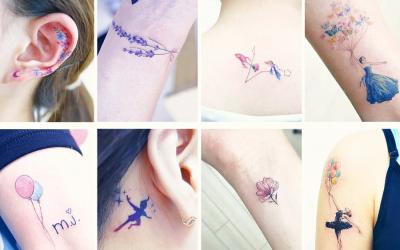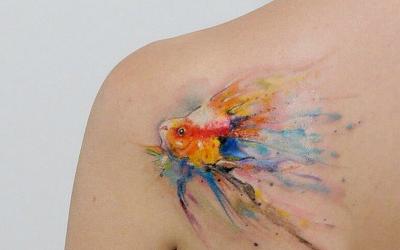Tattoo Pagan - a full description, sketches and symbols for tattoos in the Slavic style, places of application, inspiring photos
The meaning of tattooing in the pagan culture of the ancient Slavs. What tattoos were used by different strata of society.

Pagan culture of the Slavic people has a special esoteric bias and offers access to an endless treasury of secrets and knowledge. However, not everyone has the time to explore their history and follow the knowledge of the path of natural energy sources of power. But it is possible to use Slavic tattoos, as they are aimed at a specific mission.

Although historians have not found tangible evidence that the Slavs applied tattoos to the body, but they are sure - this method of decoration and symbolism was certainly used by our glorious ancestors. There is a lot of evidence. An Arab traveler told of a people living along the Volga River with body art from foot to head.
What distinguishes the Slavic style of tattooing?
He does not pursue the goal of decorating the body, thanks to the artistic image. The tattoo is applied with a special meaning - it directs the flows of divine energy throughout the body. Therefore, not everyone was allowed to use a tattoo with specific symbolism.

Who in ancient times was allowed to apply special tattoos?
It was the privilege of the Magi, as they had profound knowledge of the esoteric world and the movement of divine energy. However, in today's world in the process of applying a specific Slavic tattoo, people do not think about its sacred meaning.
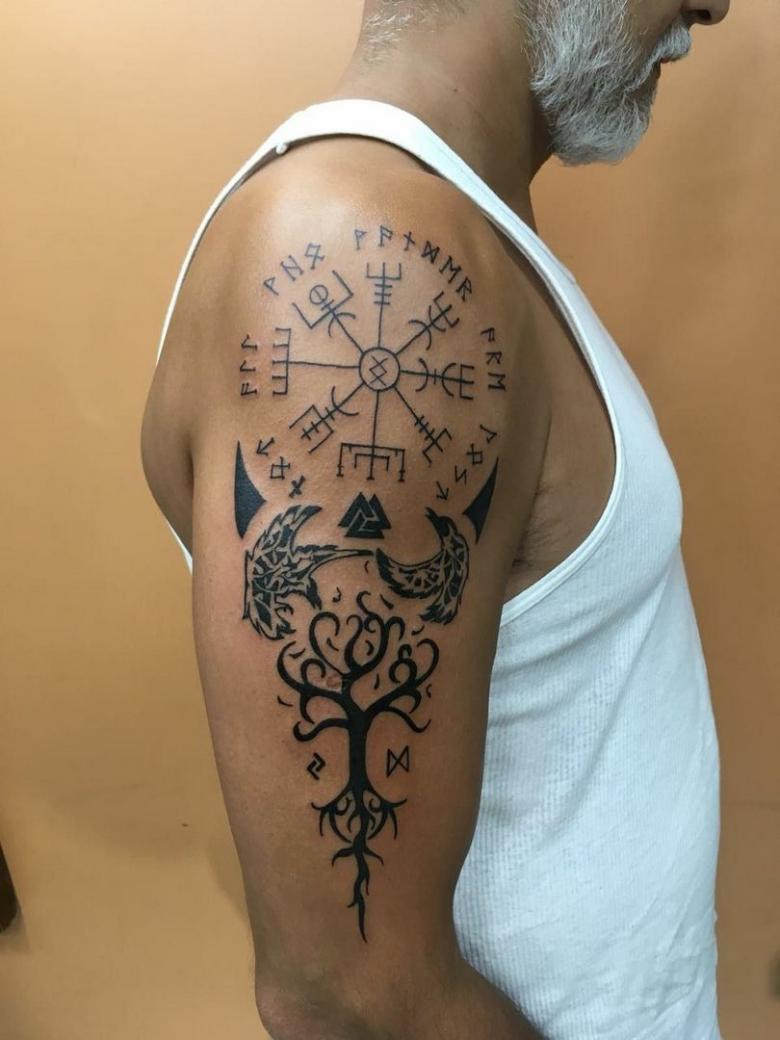
They do not ask the masters about their knowledge of ancient techniques and rituals. But ideally the trained tattooist can, thanks to the ancient art, put the image not only on the physical body, but also on the seven invisible bodies of man. Based on Eastern mythology, these bodies are called chakras or mental essence, the biofield.
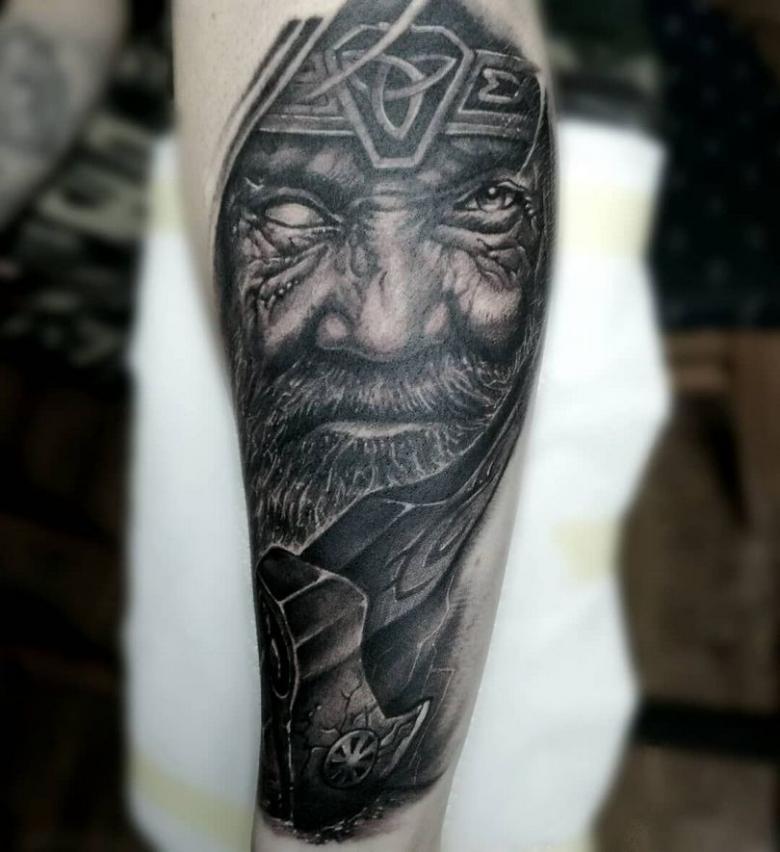
That is why in ancient times tattoo artists were considered to possess the secret power. Unfortunately nowadays even the best tattoo salons, most likely, will not be able to offer an image based on the ritual of the Magi. Although any tattoo will be put on your body for a fee.

But you need to think about whether it is worth the risk? Because the wrong use, can have the opposite effect. Alternatively, you can use the power of the Slavic amulet. However, most people do not think about symbolism and apply very strong images as everyday jewelry.
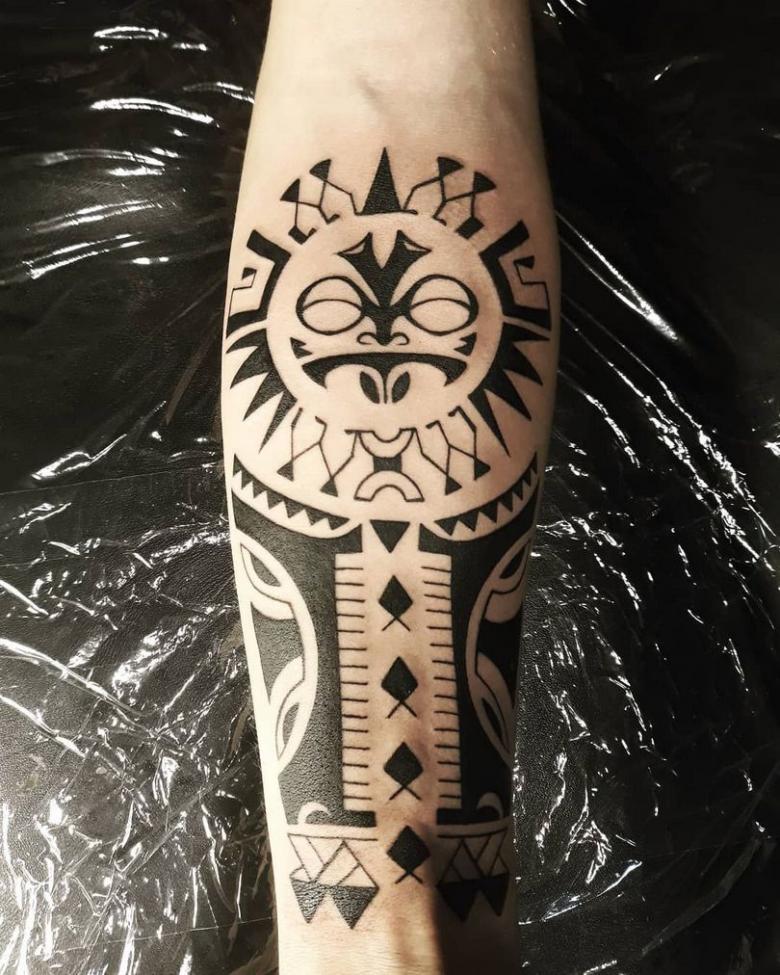
When did the Slavs put a new tattoo on themselves?
It happened on the eve of important events. The purpose was the need to increase energy resources for the task at hand. Often men adorned themselves with a special tattoo before the inevitable war with an insidious enemy.

Priests applied drawings of various runes to increase the magical connection with the gods. It was an integral part of esoteric practice. It helped increase the sense of the presence of the mysterious power of higher beings.
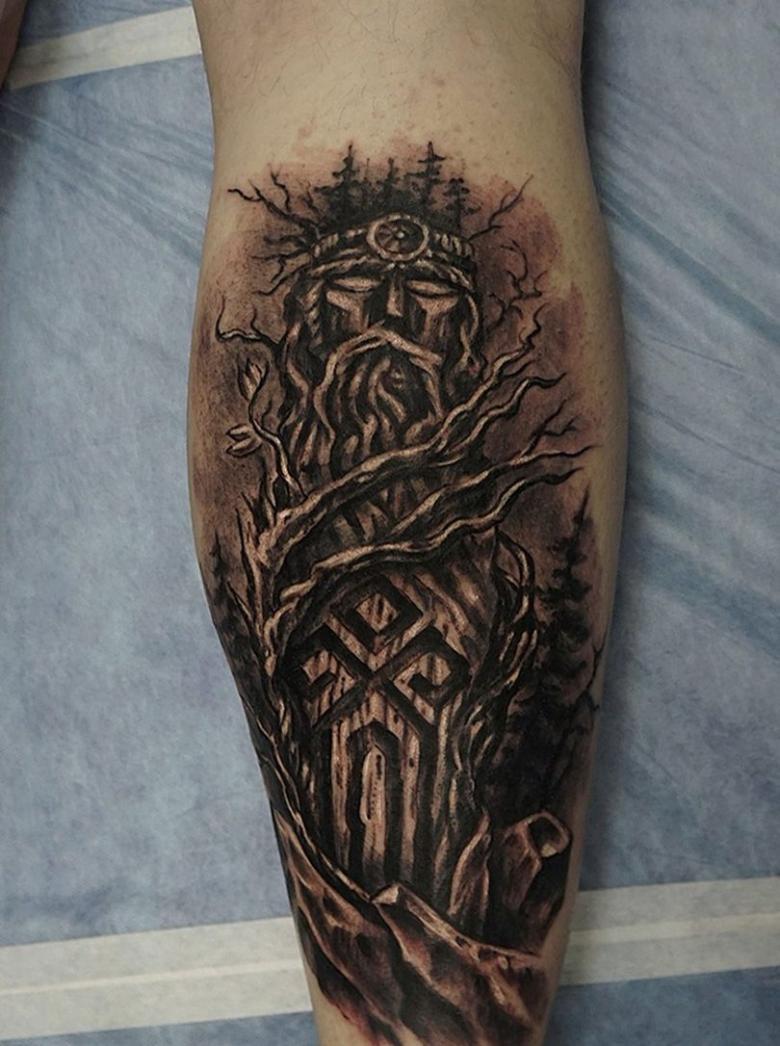
What were the Slavic tattoos?
Visible to the eye or hidden from it in secret places. In the first case, it was the hands, neck, and face. It helped to show the Slavic belonging of a person and highlighted his status in society. The hidden tattoo was connected with the kind of activity.
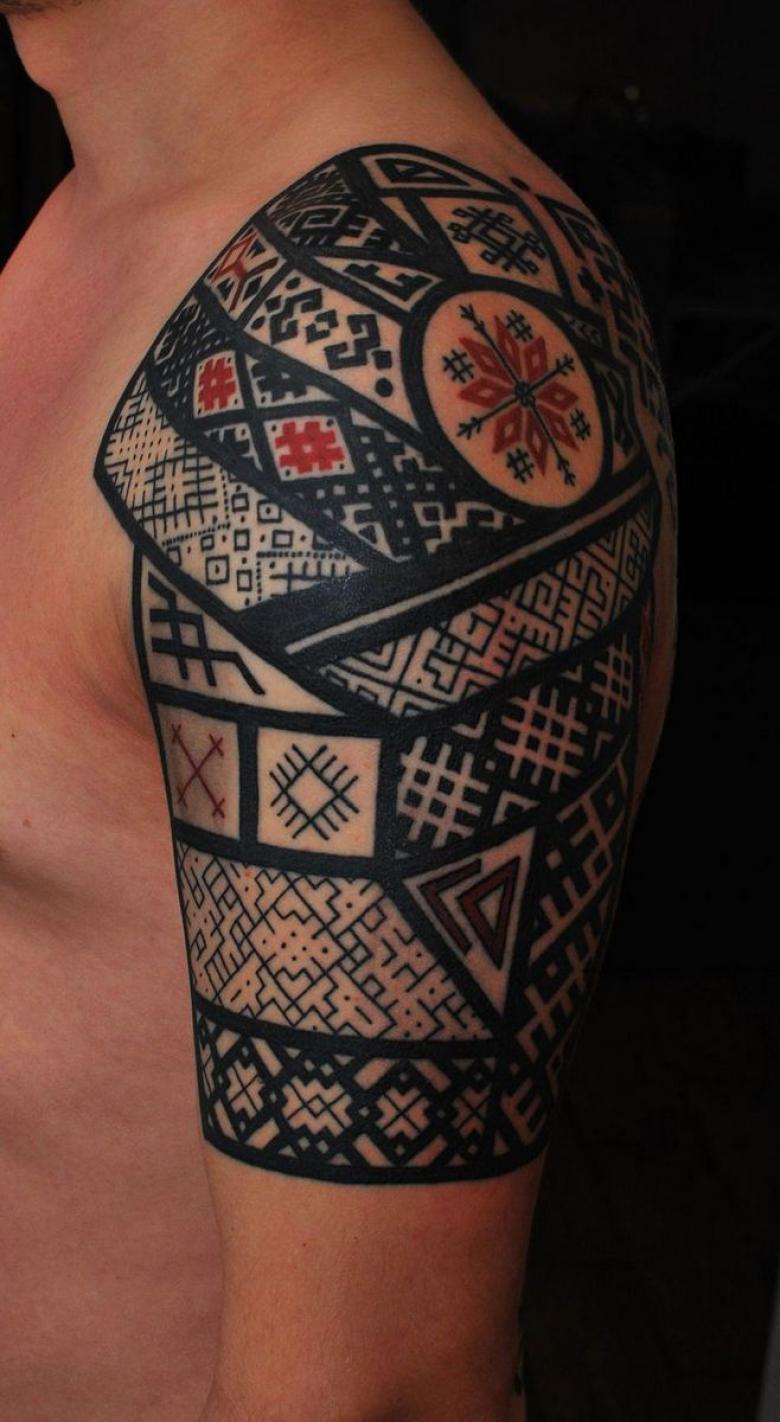
The applied symbol, sign or image helped to strengthen the skill in the process of fulfillment of some work. It was considered that its influence was very strong, as nobody could influence the power of auspicious energy of a secret tattoo on the body of a man or a woman.
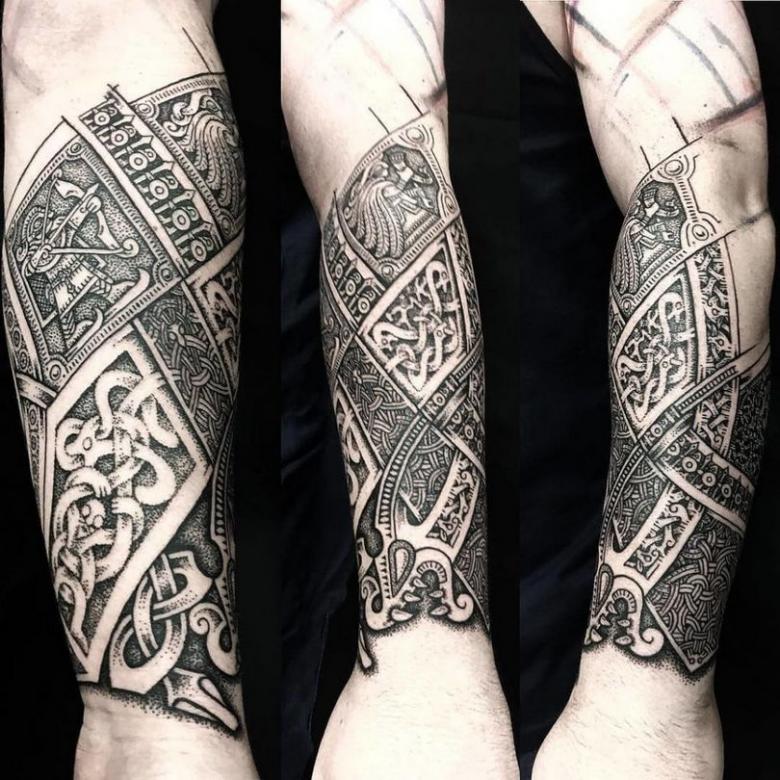
What kind of tattoos were loved by ancient Slavic men?
Popular were images giving strength of mind, clarity of consciousness, protection from the evil eye, providing a bellicose image. Slavic Gods were most often used: Yarilo, Svarog, Perun and others. How their influence was different:
- Perun patronizes armies, grants unprecedented martial prowess and safeguards the fate of the warrior;
- The image of Yarilo could guarantee youthful strength and access to inexhaustible energy;
- Svarog was considered the forefather of all things, because the bearer of this tattoo acquired the purity of intentions, a clear mind, had access to the true ideals of the Slavic gods.
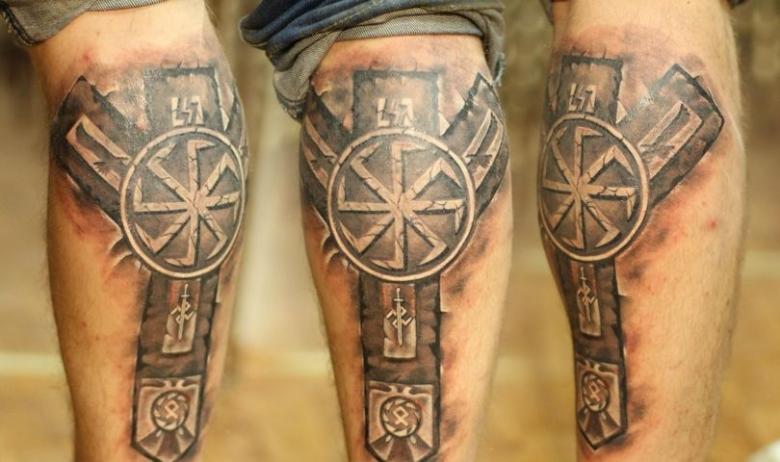
Veles helped with acquiring diligence and guaranteed success in all godly endeavors. However, there is a connection with the Scandinavian pantheon of gods, as the Vikings occupied an important place in the life of ancient Russia.
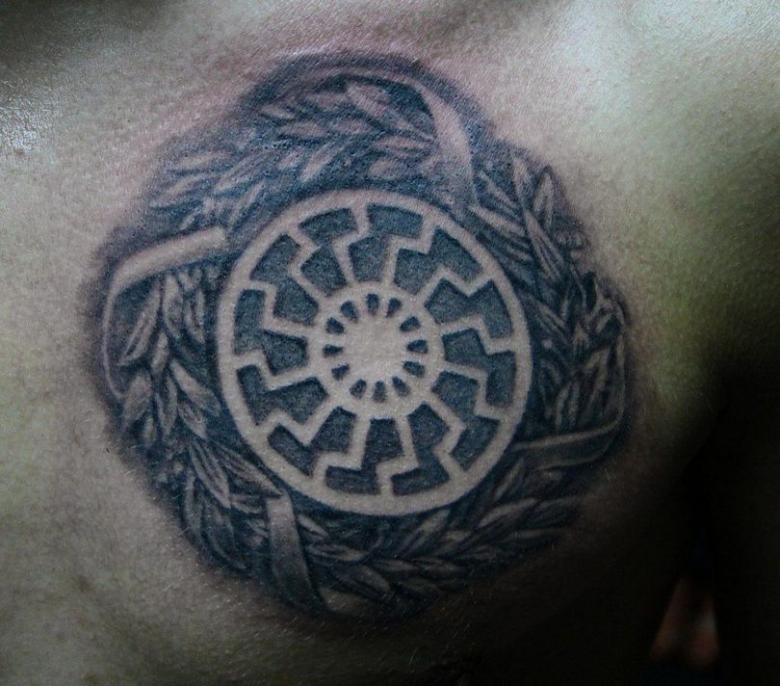
In addition to the images of the gods, various signs were used.
This theme is well described in the Vedas. Now in various tattoo parlors you can view photos of such images:
- Gromovik helps to protect against the meanness of enemy thoughts;
- Molvinets used to protect against spoilage and envy;
- Odolenie Grass creates an impregnable barrier to the penetration of disease of the soul or body;
- Fern Flower reveals and strengthens the power of the spirit.

Recently, Slavic designs have become more popular, as people seek to increase spirituality and ensure a strong connection with the power of the ancestors to use their inexhaustible energy for good causes.
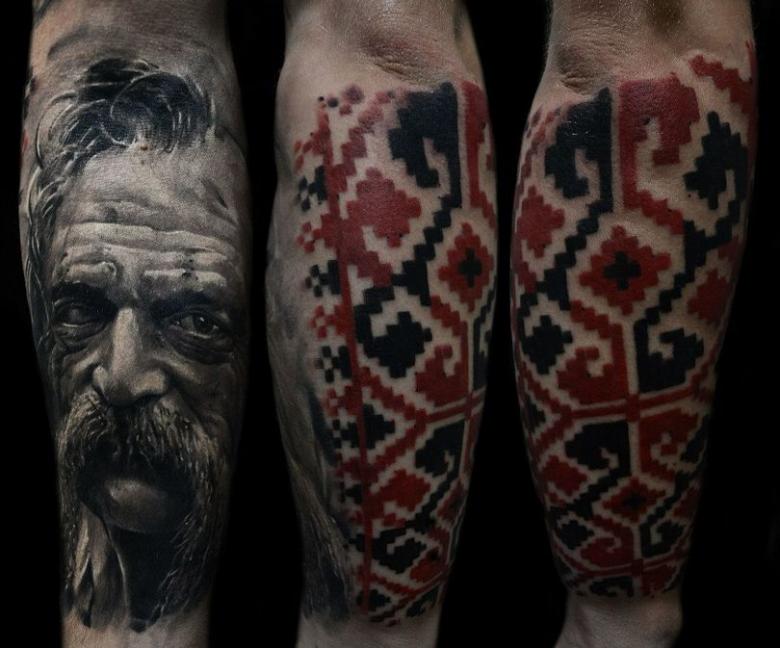
For women, the meaning of the tattoo is especially important. Therefore, they often put an image of the runes of Dazhdbog on the body, as it symbolizes financial well-being and family happiness.
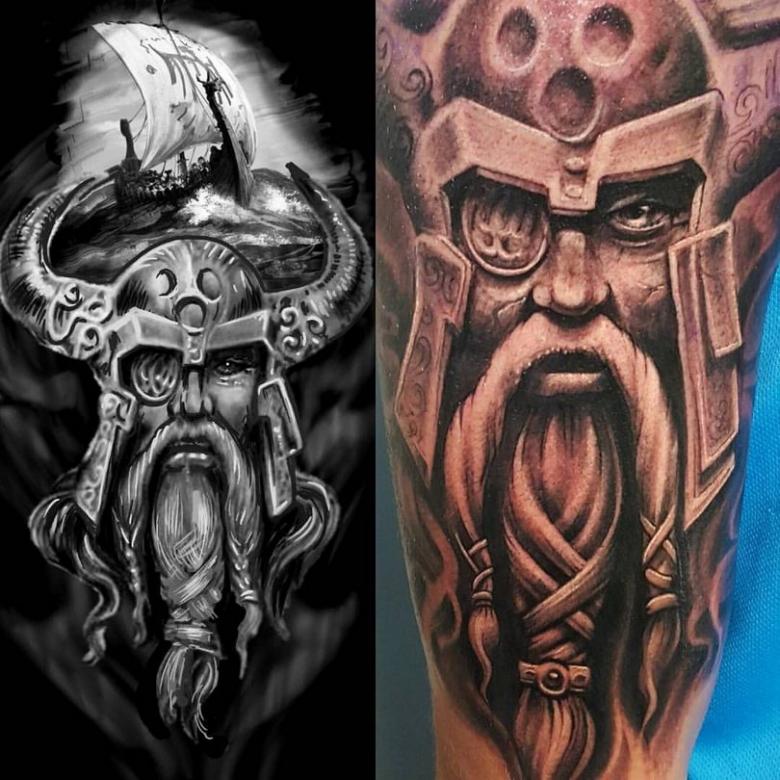
In order to ensure the multi-faceted impact, our ancestors have applied many runes, signs and images of the gods. However, they had a mutual connection and strengthened the overall impact on the fate of the carrier. Because they were in harmony with the world around them and achieved their goals.

